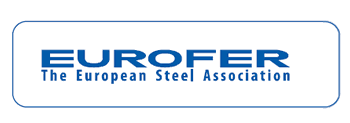EU steel safeguard must “prevent import surges” but “ensure EU market access to international steel flows” says European steel industry
Brussels, 23 April 2018 – In March the European Commission launched a safeguard investigation to shield the industry against a sudden surge of imports in the wake of the US’ decision to impose blanket tariffs on foreign steel. These ‘Section 232’ tariffs have spurred EU action, but the safeguard investigation is taking place in the context of global overcapacity and the deflection of otherwise US-bound imports towards the EU.

“The safeguard mechanism should be broad, but the purpose is not to close the market, as some steel importers have claimed. The EU safeguard mechanism explicitly serves only to prevent a further, sudden surge in imports resulting from deviated steel trade flows”, said Axel Eggert, Director General of the European Steel Association (EUROFER).
EU steel imports have increased significantly, from 18 million tonnes in 2013 to 30 million tonnes in 2017 – a 66% rise. In the first quarter of 2018 alone, steel imports surged by another 8% year-on-year.
“There have been claims made by some steel importers that the safeguard will close the EU market to imports. This is concretely untrue – these are claims made by undertakings that benefit from unsustainably low-priced, dumped imports”, emphasised Mr Eggert. “In practice, the safeguard will guarantee the open access of steel trade flows to the EU market at a nevertheless historically high level”.
In establishing a safeguard measure, the EU trade defence rules explicitly refer to the desirability of maintaining established import flows rather than closing the EU market.
“Let me be clear: the safeguard shall not cause a shortage of supply or cause safeguard-linked steel price increases”, concluded Mr Eggert. “In the meantime, we also welcome that the EU has addressed the US tariffs at the WTO in order to find a global solution as soon as possible.”
Section 232 report
The Section 232 of the 1962 Trade Expansion Act steel report can be found: here
EU notice of initiation of an investigation
The European Commission’s notice of initiation of an investigation can be found: here
About the European Steel Association (EUROFER)
EUROFER AISBL is located in Brussels and was founded in 1976. It represents the entirety of steel production in the European Union. EUROFER members are steel companies and national steel federations throughout the EU. The major steel companies and national steel federations in Switzerland and Turkey are associate members.
About the European steel industry
The European steel industry is a world leader in innovation and environmental sustainability. It has a turnover of around €170 billion and directly employs 320,000 highly-skilled people, producing on average 160 million tonnes of steel per year. More than 500 steel production sites across 22 EU Member States provide direct and indirect employment to millions more European citizens. Closely integrated with Europe’s manufacturing and construction industries, steel is the backbone for development, growth and employment in Europe.
Steel is the most versatile industrial material in the world. The thousands of different grades and types of steel developed by the industry make the modern world possible. Steel is 100% recyclable and therefore is a fundamental part of the circular economy. As a basic engineering material, steel is also an essential factor in the development and deployment of innovative, CO2-mitigating technologies, improving resource efficiency and fostering sustainable development in Europe.
